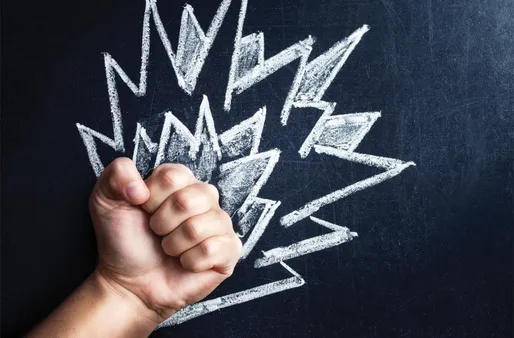Table of Contents
In today's fast-paced world, stress has become an inevitable part of our lives. The constant pressure to perform, meet deadlines, and juggle multiple responsibilities can take a toll on our mental and physical well-being. However, it's crucial to prioritize relaxation and self-care to combat stress effectively. This article explores unconventional and refreshing methods to de-stress that go beyond the typical advice of exercise, meditation, or reading. From immersing yourself in nature's tranquility to unleashing creativity, connecting with loved ones, and exploring culinary therapy, discover unique ways to find calm, reduce stress, and enhance your overall well-being.
Unleash the Power Within: A Guide to Harnessing Your True Potential
I. Power: The Essence of Energy and Control
Power: The Essence of Energy and Control
The Power of Nature: A Serene Sanctuary
Nature's tranquility can be a powerful antidote to stress. Surrounding yourself with verdant landscapes, soothing sounds of water, and the fresh fragrance of the outdoors can lower blood pressure, reduce stress hormones, and boost mood. Hiking, gardening, or simply sitting beneath a tree can provide a much-needed escape from the hustle and bustle of daily life. Read more about the benefits of nature immersion.
Related Posts:
- How to Do a Handstand: A Step-by-Step Guide
- The Best Gymnastics Equipment for Home Use
- How to Improve Your Flexibility and Mobility with Gymnastics
The Power of Creativity: A Journey of Self-Expression
Engaging in creative activities can be a cathartic way to manage stress. Whether it's painting, drawing, playing an instrument, writing poetry, or crafting, creativity allows you to express your emotions and connect with your inner self. The act of creating something new can provide a sense of accomplishment and fulfillment, shifting your focus away from stressors and into a state of flow. Explore the history and evolution of gymnastics.
Creative Activity | Benefits |
|---|---|
Painting and Drawing | Enhances color perception and hand-eye coordination |
Playing an Instrument | Improves cognitive function and reduces stress |
Writing Poetry | Encourages self-expression and emotional release |
Crafting | Promotes mindfulness and reduces anxiety |
II. Harnessing Power: From Ancient Innovations to Modern Marvels
Harnessing Power: From Ancient Innovations to Modern Marvels
Throughout history, humans have harnessed the power of nature and technology to improve their lives and shape the world around them. From the invention of the wheel to the development of electricity, our ability to control and utilize power has transformed societies and continues to drive progress.
In ancient times, humans relied on the power of animals, wind, and water to perform tasks and travel. The domestication of horses and oxen provided a source of transportation and labor, while windmills and watermills harnessed the energy of nature to grind grain and pump water. These innovations laid the foundation for the development of more advanced technologies.
Source | Application |
Animals | Transportation, labor |
Wind | Windmills |
Water | Watermills |
The Industrial Revolution brought about a surge of technological advancements that harnessed the power of steam and fossil fuels. Steam engines revolutionized transportation, powering trains and ships, while the development of the internal combustion engine led to the invention of cars and airplanes. These innovations transformed industries, economies, and societies, connecting people and goods across vast distances.
In the 20th century, the discovery of nuclear power and the development of renewable energy sources such as solar and wind power marked significant milestones in our ability to harness energy. Nuclear power plants generate electricity through nuclear reactions, while solar and wind farms convert sunlight and wind energy into electricity. These technologies have the potential to provide clean and sustainable energy for future generations.
- Steam engines: Revolutionized transportation
- Internal combustion engine: Led to the invention of cars and airplanes
- Nuclear power: Generates electricity through nuclear reactions
- Solar and wind power: Convert sunlight and wind energy into electricity
As we move forward, the challenge lies in developing even more efficient and sustainable ways to harness power. By embracing innovation and investing in research and development, we can continue to push the boundaries of what is possible and create a brighter future for all.
The pursuit of harnessing power has been a driving force behind human progress, and it continues to shape the world we live in today. From ancient innovations to modern marvels, our ability to control and utilize power has transformed societies and will continue to play a vital role in shaping our future.
The History and Evolution of Gymnastics
III. The Dynamics of Power: Balancing Consumption and Conservation
The Dynamics of Power: Balancing Consumption and Conservation
Understanding the intricate relationship between consumption and conservation is crucial for individuals and societies to achieve a harmonious coexistence with the planet's finite resources. While consumption fuels economic growth and material well-being, excessive consumption can strain natural resources, leading to environmental degradation and climate change.
The dynamics of power play a significant role in shaping consumption and conservation patterns. Institutions, policies, and market forces influence individual and collective behaviors, affecting the allocation of resources and the balance between consumption and conservation.
- Economic Power: Economic power, often concentrated in the hands of corporations and wealthy individuals, can influence production and consumption patterns. Industries with significant economic power may prioritize profit over environmental sustainability, leading to overconsumption and pollution.
- Political Power: Political power enables leaders and policymakers to implement regulations and policies that promote conservation and sustainable practices. Effective governance can curb excessive consumption, protect natural resources, and incentivize eco-friendly technologies.
Striking a balance between consumption and conservation requires collective action and a shift in values and priorities. Governments, businesses, and individuals can contribute to this transformation through various strategies.
Stakeholder | Strategies |
Governments |
|
Businesses |
|
Individuals |
|
Ultimately, the power to achieve a sustainable balance between consumption and conservation lies in the hands of every individual and organization. By making conscious choices, advocating for change, and holding leaders accountable, we can create a future where human prosperity and environmental preservation coexist harmoniously.How to Live a More Sustainable Lifestyle
The path towards sustainable consumption and conservation may be challenging, but it presents immense opportunities for innovation, economic growth, and improved quality of life. As we embrace new technologies and rethink our relationship with the planet, we can unlock a future where power serves as a force for positive transformation and a catalyst for a thriving and sustainable world.The Importance of Environmental Sustainability
IV. Power and Progress: Shaping Societies and Driving Change
Power and Progress: Shaping Societies and Driving Change
From the invention of the wheel to the advent of artificial intelligence, humanity's pursuit of power has been a driving force in shaping our world. The quest for power has spurred technological advancements, economic growth, and social change, while also leaving behind a trail of conflict, inequality, and environmental degradation.
The concept of power is multifaceted and dynamic, encompassing various forms and dimensions. Power can be political, economic, military, or social, and it can be wielded by individuals, groups, or nations. While power can be used to achieve positive outcomes, such as fostering progress and improving lives, it can also be abused, leading to oppression, exploitation, and destruction.
Type | Description |
Political Power | The ability to influence or control governmental policies and decisions. |
Economic Power | The ability to control resources, production, and distribution of goods and services. |
Military Power | The ability to use force or the threat of force to achieve political or territorial objectives. |
Social Power | The ability to influence the behavior, beliefs, or attitudes of others through persuasion, coercion, or manipulation. |
Throughout history, power struggles have played a central role in shaping the course of civilizations. Empires have risen and fallen, ideologies have clashed, and revolutions have transformed societies. The pursuit of power has driven wars, conquests, and colonizations, often resulting in devastation and bloodshed.
However, power can also be a force for good when used responsibly and ethically. Empowered individuals and communities can advocate for change, challenge injustice, and work towards a more just and equitable world. Harnessing the power of collective action, people have brought about social movements, political reforms, and environmental protections.
As we navigate the challenges of the 21st century, from climate change to global inequality, the question of power and its responsible use remains more relevant than ever. Striving for a more sustainable, just, and peaceful world requires us to confront the imbalances of power and work towards a more equitable distribution of resources and opportunities.
Ultimately, the power to shape our future lies in the hands of each individual. By harnessing our collective power through collaboration, empathy, and a commitment to positive change, we can create a world where power serves humanity and not the other way around.